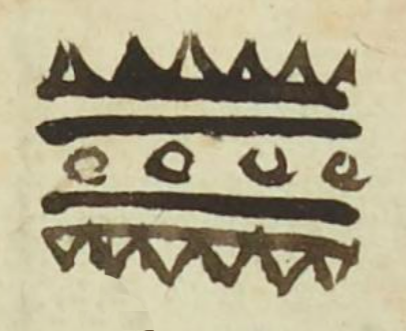Itzcoatl (MH488v)
This black-line drawing of the compound glyph for the personal name Itzcoatl (“Obsidian Blade-Serpent,” attested here as a man’s name) shows a bird's eye view of part of a serpent's back, with obsidian points coming out on both sides. The serpent has some stripes on the sides and some small circles in the center of its back.
Stephanie Wood
To understand this representation of Itzcoatl better, see some other such glyphs below. There is an unexpected similarity between this sign and a sign for Tetlacuilol (also below).
Stephanie Wood
luys ytzcovatl
Luis Itzcoatl
Stephanie Wood
1560
Xitlali Torres
obsidiana, piedras, navajas, cuchillos, serpientes, culebras, víboras, serpents, snakes, knives, flints, nombres de hombres

itztli, obsidian, https://nahuatl.wired-humanities.org/content/itztli.
coatl, snake, https://nahuatl.wired-humanities.org/content/coatl
Serpiente de Obsidiana, o Navaja-Culebra
Stephanie Wood
Matrícula de Huexotzinco, folio 488v, World Digital Library, https://www.loc.gov/resource/gdcwdl.wdl_15282/?sp=56&st=image
This manuscript is hosted by the Library of Congress and the World Digital Library; used here with the Creative Commons, “Attribution-NonCommercial-ShareAlike 3.0 License” (CC-BY-NC-SAq 3.0).







